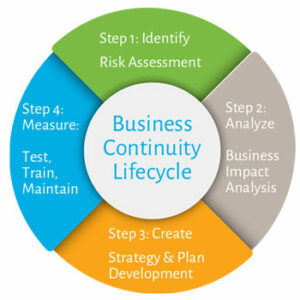-
Url copied to clipboard.
Unfortunately, this may be the reason it often goes ignored, possibly due to budget constraints, resource or maybe a project more urgent that becomes the focus for the organisation. Regardless of the reason, it really should be the phase where most emphasis is given. You can have the best plans in the world, but if you haven’t trained and validated them and your people, you are setting yourself up for failure. ‘It’s all about the people.’
Invest in your people
It is essential that all individuals undertaking BC related tasks at any level have the appropriate level of competence for the role.
For each role in the Business Continuity Management (BCM) programme, the necessary skills and desired competence levels should be identified. Individuals should then be assigned to roles according to their current level of competence and any training that needs identifying.
The goal of a successful BC training programme should aim to make it a part of the culture and the ‘way things are done around here’. This will increase the organisation’s ability to foresee threats and respond appropriately and in a timely manner, therefore improve levels of resilience.
Train them, then validate them
A Business Continuity Plan (BCP) is considered a draft plan until it has been validated through a scenario exercise. This is similar to your people when it comes to their training and knowledge. Give them the opportunity to build confidence with their plans and their own capability. It’s better to do this in a safe environment while you have the opportunity – not wait until you are in a real crisis event.
The purpose of Validation is to ensure that the BC capability reflects the nature, scale and complexity of the organisation it supports and that it is current, accurate, and complete. Validation additionally confirms that actions are taken to continually improve organisational resilience.
It is vital to run a scenario exercise as an organisation’s BC capability cannot be considered reliable until it has been exercised.
Each exercise within the Exercise Program needs to be carefully planned to maximise the benefits from the time expended in developing and delivering it. The following should be considered:
- Realism
- Exercises should feel as real as possible
- Minimal Exposure
- Exercises should minimise the exposure to disruption
- Costs and benefits
- Preparation
- Scope, complexity and skills required
- Participants
- Who should be involved
Over the past decade, RiskLogic has facilitated over 850 training sessions and scenario exercises including the MCG Anti-Terror Scenario, as reported by Sunrise on Channel 7.
We are the industry-leading supplier to realistic and valuable exercises that encourage all teams and individuals to learn and act upon the situations we put them in.
For more information on the importance of training and exercise, you can contact us directly for a discussion.
—





